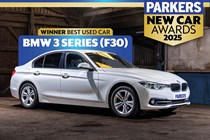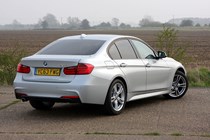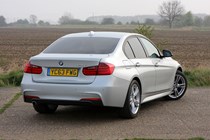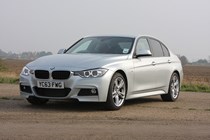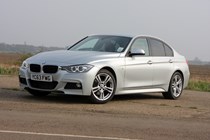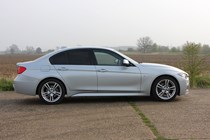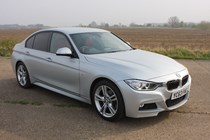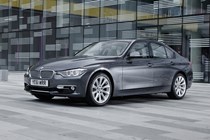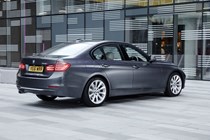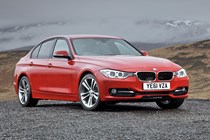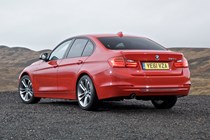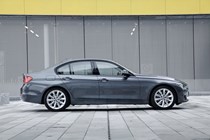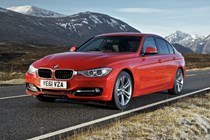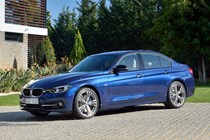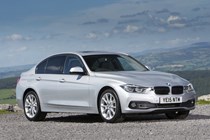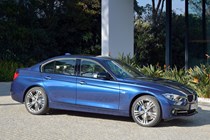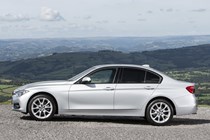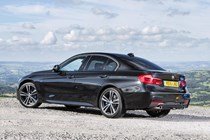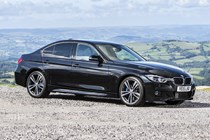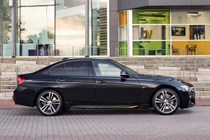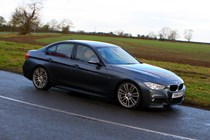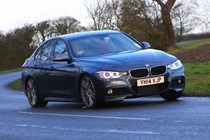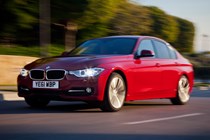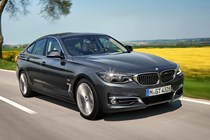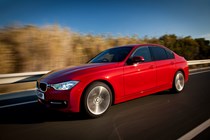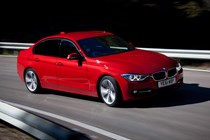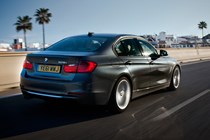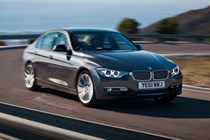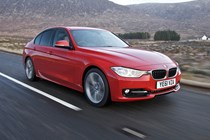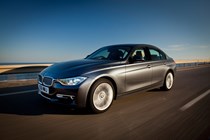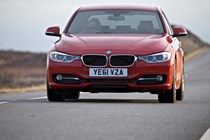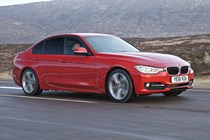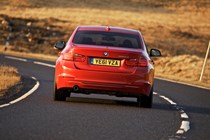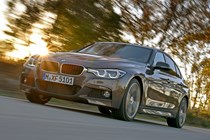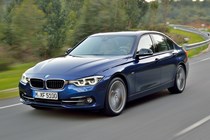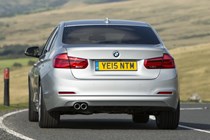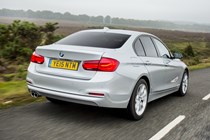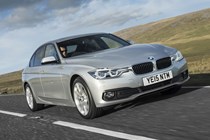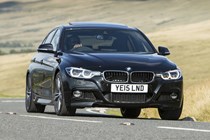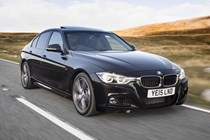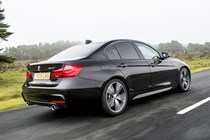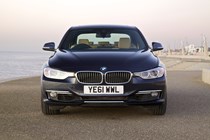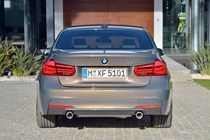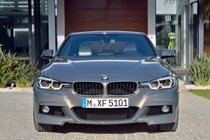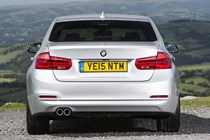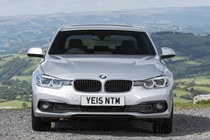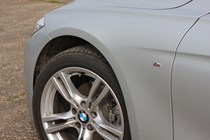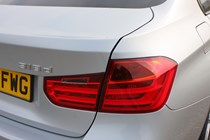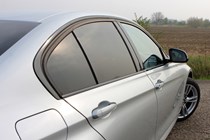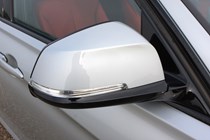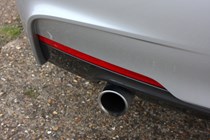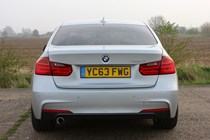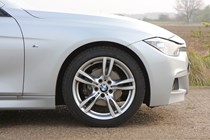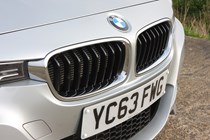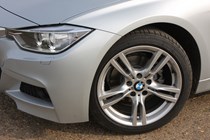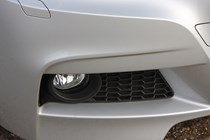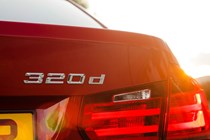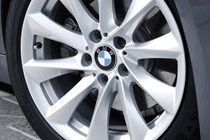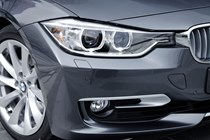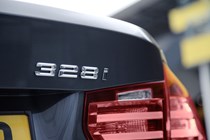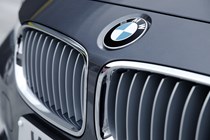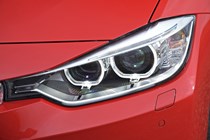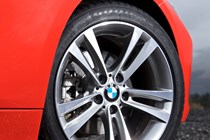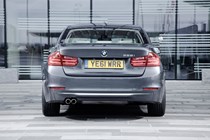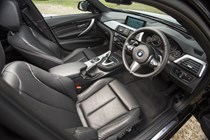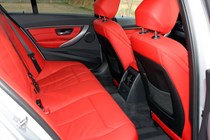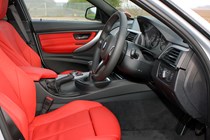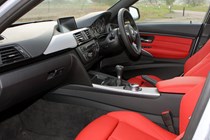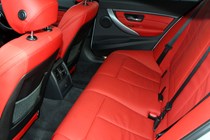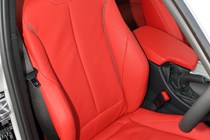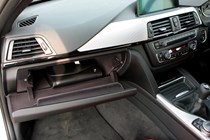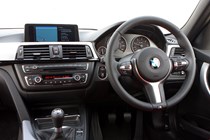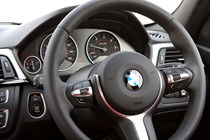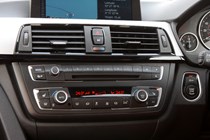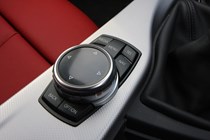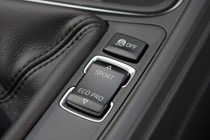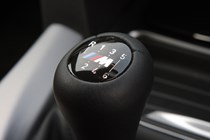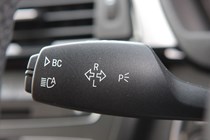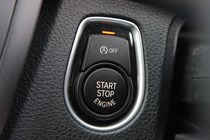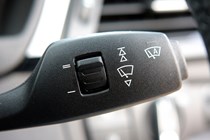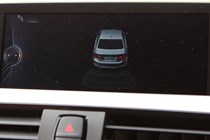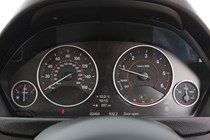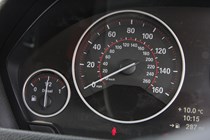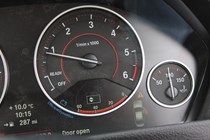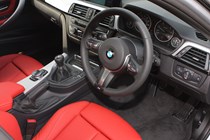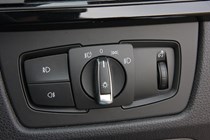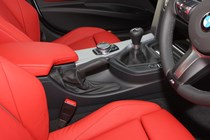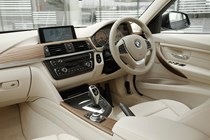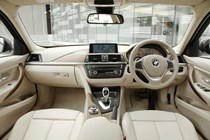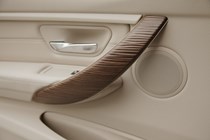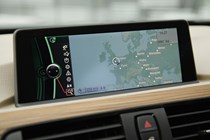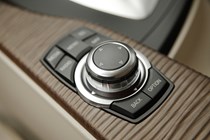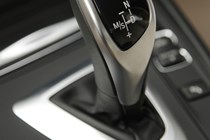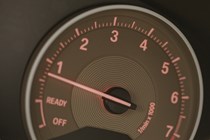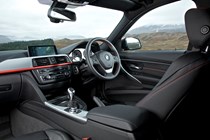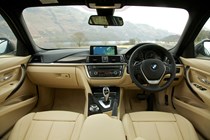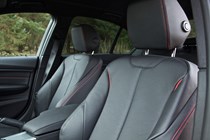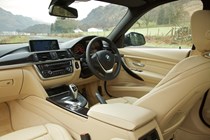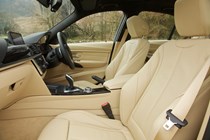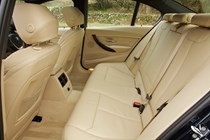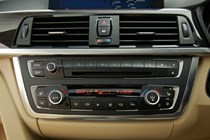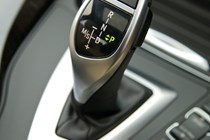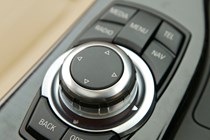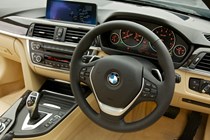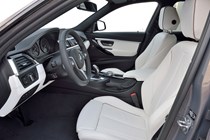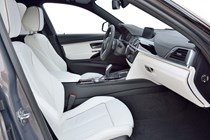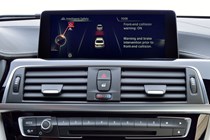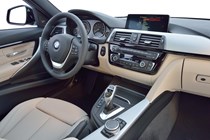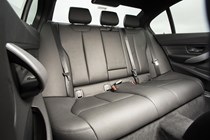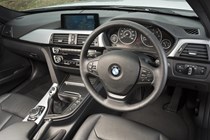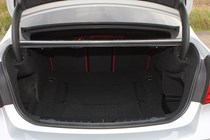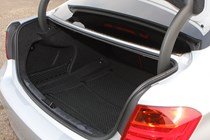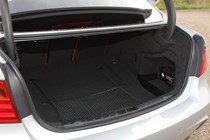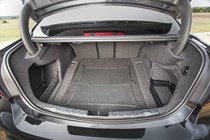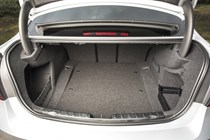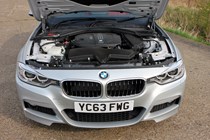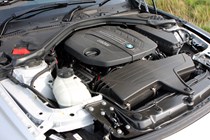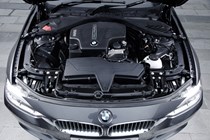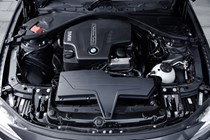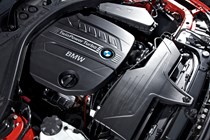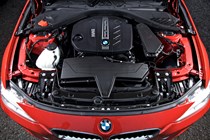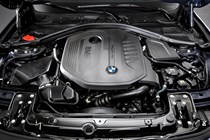
BMW 3-Series Saloon (2012-2019) engines, drive and performance
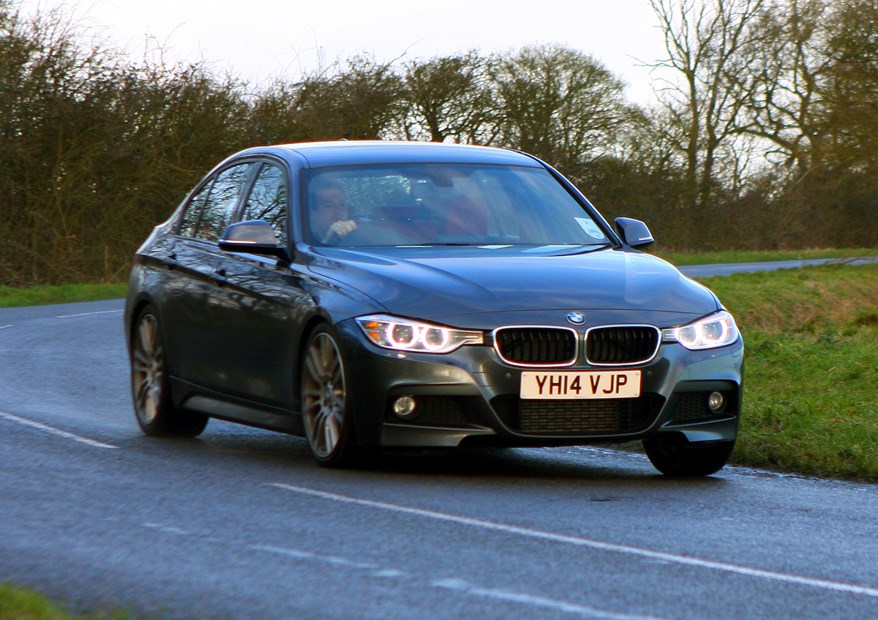
- Efficient and powerful diesel range
- Broad range of petrols, too
- Rapid M3 has a legacy to live up to
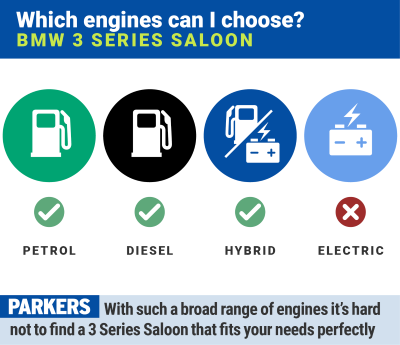
Few cars have an engine line-up as broad as the selection available for the BMW 3 Series Saloon, and while it can appear quite daunting, the premise is that there’s a model that suits your needs, whether you’re prioritising performance or efficiency.
Economical 3 Series Saloon diesels
Despite the variety of bootlid badges, there are only two basic diesel engines in the 3 Series range, albeit with different power and torque outputs – rarely do the numbers relate to engine capacities as they did in years gone by.
Case in point is the entry-level 316d, powered by a four-cylinder, turbocharged 2.0-litre motor producing just 116hp, but a more useful 270Nm of torque at just 1,250rpm, making it a flexible unit.
A six-speed manual gearbox is standard, with an eight-speed automatic optionally available, both directing drive to the rear wheels. A top speed of 125mph is common to both, although at 10.6 seconds, the auto’s a tenth of a second quicker than the manual in the 0-62mph sprint.
The same engine’s cranked up to 150hp and 320Nm of torque at 1,500rpm in the 318d, with the same gearbox options as before. Performance is more agreeable: both transmission types will reach 134mph and again the automatic’s quicker 0-62mph: 8.4 seconds versus the manual’s 8.6-second time.
Most fuel efficient of the diesel range is the 320d EfficientDynamics, with a 163hp edition of the 2.0-litre engine, producing 400Nm of torque at 1,750rpm. Despite the economy focus, it’s pleasingly quick, with both manual and automatic versions reaching 143mph, with 0-62mph times of 7.9 and 7.8 seconds, respectively.
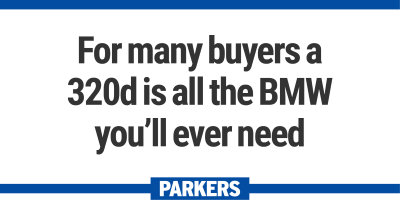
The regular 320d has even more grunt, with 190hp, albeit with the same torque figure as the ED, but despite the increase it’s not significantly quicker: 0-62mph times of 7.3 seconds (manual) and 7.2 seconds (auto) compliment the 146mph top speed.
All-wheel drive can also be added to both transmissions in the guise of the 320d xDrive, although there’s a small drop in performance as a consequence. Both have a top speed of 145mph, with the manual’s 7.4-second 0-62mph time being 0.1 seconds slower than the automatic.
Automatic is the only transmission available on the 330d, the first of the diesels with a six-cylinder, 3.0-litre engine. With power ramped-up to 258hp and with 560Nm of torque on tap from 1,500rpm, it’s a rapid saloon. Top speed is electronically governed to 155mph, with a 0-62mph time of 5.6 seconds.
Additional traction on the 330d xDrive – also automatic – shaves the 0-62mph time down to 5.3 seconds, although it’s not the fastest diesel 3 Series. That honour belongs to the 335d xDrive, still automatic-only, and still running the 3.0-litre diesel, although here it produces 313hp and 630Nm of torque at 1,500rpm.
It’s still capped to 155mph all-out, but its 4.8-second 0-62mph ensures it’s only beaten in acceleration terms by the M3.
3 Series Saloon petrols
The unusual sound emanating from the 318i is that characterful thrum of a three-cylinder engine, in this case the same turbocharged 1.5-litre unit found in various MINI Coopers.
At 136hp and with 220Nm of torque at 1,250rpm, its output is relatively modest, but as with most of the range, manual and automatic transmissions are available. Both have a top speed of 130mph; the manual’s 8.9-second 0-62mph time trumping the automatic’s 9.1-second time.
A four-cylinder 2.0-litre powerplant’s under the bonnet of the 320i, producing 184hp and 270Nm of torque at 1,350rpm.
It’s surprisingly pacey given its lowly ranking in the hierarchy, with a 146mph top speed and 0-62mph times of 7.2 and 7.3 seconds for the manual and automatic, respectively.
All-wheel drive security is available in the form of the otherwise mechanically similar 320i xDrive, but there’s a small reduction in its performance: top speed dips to 144mph, with 0-62mph times for both transmissions increasing by 0.3 seconds.
Despite its 330i badging, the 2.0-litre engine also features here, with outputs elevated to 252hp and 350Nm of torque at 1,450rpm. Top speed is governed to the familiar 155mph ceiling with both gearbox types, but at 5.8 seconds the automatic’s a tenth of a second quicker than the manual in the 0-62mph dash. The 330i replaced the pre-2015 facelift 328i which is almost as quick.
There is a six-cylinder, 3.0-litre petrol engine in the 340i, though, with 326hp on offer and torque peaking at 450Nm at 1,380rpm. Top speed remains at 155mph, but the 0-62mph time is pared down to 5.1 seconds for the automatic, 5.2 for the manual. This is quicker than the less powerful 335i that it replaced in 2015.
Urban frugality for the plug-in hybrid
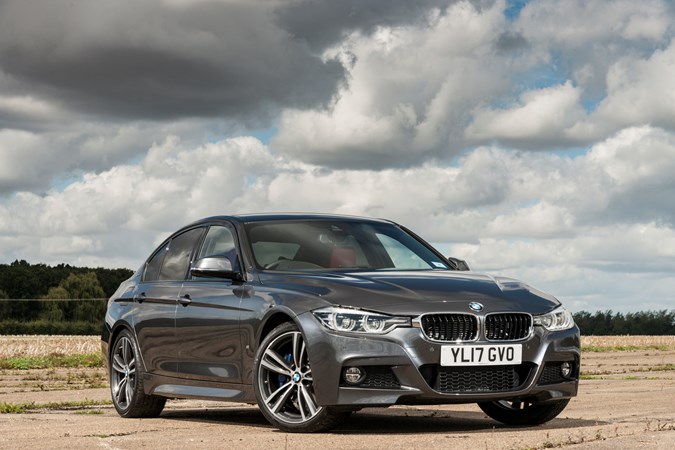
The suffix of the 330e refers to electricity, signifying that this is the petrol-electric plug-in hybrid of the 3 Series range; an automatic gearbox is the sole choice here.
That familiar 2.0-litre engine features once again, paired up with an electric motor giving a theoretical zero-emissions range of 25 miles. Expect high teens in reality.
But, from a performance perspective, a combined output of 252hp and 420Nm of torque means it’s no slouch: top speed is 140mph, with a 6.1-second 0-62mph time.
Performance flagship – the BMW M3
This iteration of the M3 packs 431hp and is solely available as a four-door saloon given that the Coupe and Convertible versions are badged M4.
Nestled in the engine bay is a six-cylinder 3.0-litre unit – different from that in the 340i – with a pair of turbos. Turbocharged engines are infamous for lag lower down in the rev range, where the performance is relatively ordinary until the spools of the forced induction system kick in.
Not so here. Its pair of small, lightweight turbos have a short inlet tract and very effective cooling of the air that’s passing through them. In short, more torque is available at lower engine speeds, with 550Nm itching to be deployed at the rear wheels from just 1,850rpm.
It’s not peaky in its delivery either, the rev counter’s needle arcing smoothly to around 5,500rpm with no tangible drop off in performance. There’s the merest of breathers on each gear change, before the revs rapidly rise again demanding the next ratio be selected. Floor the M3’s throttle at any speed and it seemingly has a deluge of torque on offer, making overtaking manoeuvres particularly effective and safe.
In the M3’s upper echelons of revs, there’s an angrier growl to the exhaust, amplified through the cabin’s speakers. Pootle around town at lower speeds and you’re accompanied by an orchestra of snarling pops and crackles. The cover of the M3’s subtle looks is blown apart by its soundtrack.
Two gearbox choices are on offer: a six-speed manual or a seven-speed M-DCT dual clutch gearbox is an engineering marvel that maximises the car’s performance and efficiency.
It’s almost as smooth as a regular automatic transmission when you want it to be, but switch between its three settings and you have a more brutal mode, one with an engaging kick in the back of your seat as you blip through the gears with the throttle wide open.
The M-DCT’s the quicker, too: 4.1 seconds 0-62mph, versus the manual’s 4.3-second time. Top speed is again limited to 155mph. And if that’s not sufficient, there’s the M3 Competition Pack, with a power hike to 450hp, although torque remains the same.
This M3’s more focused, with stiffer, sharpened responses to correspond with its 0-62mph times of 4.0 seconds (M-DCT) and 4.2 seconds (manual)
- One of the most agile cars of its type
- Steering is delightfully communicative
- M3 a tad sanitised with electronics switched on
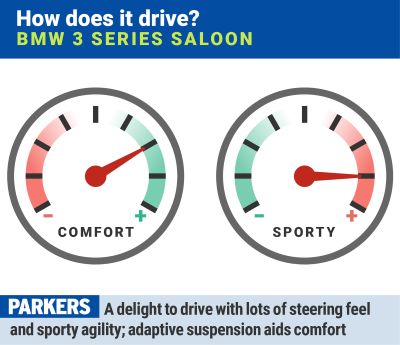
For many compact executive car buyers – and rival manufacturers – the handling benchmark in this class is the BMW 3 Series Saloon.
This sixth-generation model had a legacy to live up to; even its predecessor was considered to be the segment’s best car dynamically for its entire production run.
Cementing its place at the head of the handling pack, this 3 Series iteration had stiffer underpinnings and bodywork than its predecessor, despite being longer overall. Crucially, its (predominantly) rear-wheel drive arrangement allows for the front wheels to be pushed out to the edges of the nose of the car for greater agility.
This helps make the BMW a class act; the steering has pin-point accuracy and is beautifully weighted. There is plenty of feedback through the steering wheel, allowing the driver to feel at one with the car.
Body roll is minimal and the 3 Series is extremely composed through a series corners thanks to excellent levels of traction, even without the benefit of all-wheel drive.
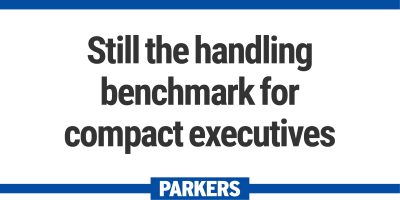
Many versions feature Drive Performance Control that allows the driver to swap between driving modes at the touch of a button.
The modes comprise of Eco Pro, Comfort, Sport with an extra level called Sport+ is available on Sport and M Sport models. Here the driver can vary parameters such as steering weight, throttle response, gearchange points on automatic models and the firmness of the adaptive suspension (where fitted).
We strongly recommend that before committing to buy a 3 Series, you sample versions with and without the adaptive suspension option. It’s an option we would choose – adding a greater degree of comfort to the BMW’s ride quality – but if you’re predominately driving on motorways, you might feel it’s not worth the additional outlay.
Adjustable BMW M3 handling
The 3 Series’s handling prowess bodes well for the M3, which also underwent an 80kg weight-saving programme compared with its predecessor in an effort to finesse its handling, with extensive use of carbonfibre and aluminium.
With all of its electronic stability systems on, the M3 remains a comfortable yet devastatingly quick sports saloon, displaying agility more akin to a two-seater roadster. Some might feel the sensation is sanitised compared with M3s of old; the steering will push into safe understeer if tight bends are tackled too quickly, but turn off the traction control and it’s no longer a hindrance.
Its balance is impeccable, allowing drivers who prefer to use the throttle to aid steering angle with rear end movement to do so, but you’ll need sharp reflexes to gather it all up again if you’re too liberal in your application of the accelerator pedal.
Body roll is kept to a minimum even in Comfort model, but selecting Sport or Sport+ tautens the M3 to a degree of being virtually roll-less through corners.
There are similar settings for the steering too, increasing the weight but not the feel as you progress through them. Largely we found keeping it in Comfort was fine, the thick, padded steering wheel rim being a delight to hold and offering a decent level of communication.


